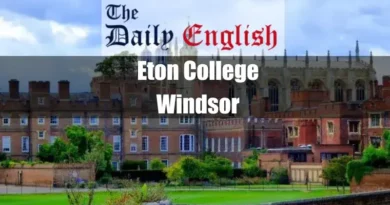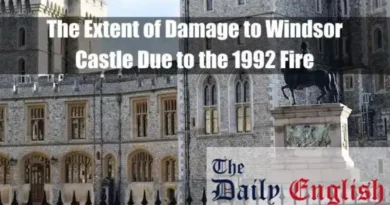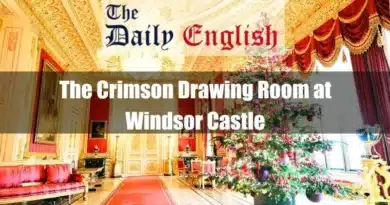I. Introduction
On November 20, 1992, a fire broke out in Windsor Castle, the largest inhabited castle in the world and one of the official residences of the British Monarch. The fire caused extensive damage, destroying 115 rooms and nine State Rooms. It took 15 hours for firefighters to bring the blaze under control.
The fire started in the Queen’s Private Chapel on the first floor of the northeast wing of the castle. It is believed to have been caused by a spotlight left too close to a curtain. The fire quickly spread to the castle’s upper floors, and by the time it was extinguished, it had caused millions of pounds worth of damage.
II. Windsor Castle Fire Salvage Operation

A. The Immediate Response
The immediate response to the fire was one of shock and dismay. The Queen was “deeply saddened” by the damage to her beloved home. She and Prince Philip were involved in rescuing priceless works of art from the Royal Collection.
B. The Salvage Operation
Apart from the several hundred firefighters directly involved in combatting the fire, the castle’s staff and skilled tradesmen rallied to support the castle’s fire brigade and the volunteer salvage corps. Their collaborative efforts were instrumental in moving furniture and priceless works of art from endangered apartments to the safety of the castle’s riding school.
This colossal operation involved rescuing various invaluable items, including a 150-foot-long table and a 120-foot-long carpet from the Waterloo Chamber. The rescue extended to preserving 300 clocks, a collection of miniatures, thousands of valuable books, historic manuscripts, and Old Master drawings from the Royal Library.
Under the guidance of fire officers, heavy chests and tables were left behind, while all other items were carefully placed on oversized tarpaulin sheets in the North Terrace and Quadrangle. The police coordinated the deployment of dozens of removal vans from various regions, facilitating the safe transport of these precious items to different areas within the castle.
St. George’s Chapel at Windsor Castle in History & Today
C. The Role of the Royal Household

Members of the Royal Household played a vital role in this formidable salvage operation. The 13th Earl of Airlie, among others, contributed to the effort. The Royal Collection Department, including notable figures such as Sir Geoffrey de Bellaigue, Hugh Roberts, Mrs Roberts, Christopher Lloyd, and Oliver Everett, were instrumental in ensuring the safe retrieval of important artefacts.
The Household Cavalry, arriving from the nearby Combermere Barracks, lent a significant hand in handling bulky items. A team comprising 125 castle staff, 100 military personnel, 125 contractors, and 20 Crown Estate staff members collaborated to carry out this monumental salvage operation.
- Also, read Windsor Castle Opening Times: Everything You Need to Know.
- Also, read Windsor Castle Tickets: A Proven Comprehensive Guide.
State Apartments at Windsor Castle: An Ultimate Guide
D. Casualties
Remarkably, despite the magnitude of the fire and the vast rescue operation, there were no reports of serious injuries or fatalities. A decorator in the Private Chapel, Dean Lansdale, sustained burns on his hands while rescuing several valuable paintings. He was promptly attended to and received medical care at the Royal Surgery and subsequently at a hospital.
Contrary to some media reports, there was no confirmation of a heart attack affecting the surveyor of the Queen’s pictures. Five firefighters were taken to the hospital with minor injuries, highlighting the dedication and courage exhibited by all involved in battling the fire and safeguarding Windsor Castle’s treasures.
E. The Investigation

Following the fire’s outbreak, an immediate investigation was launched to determine the root cause of the catastrophe. It was ascertained that the fire had originated in the Queen’s Private Chapel; however, the precise ignition source remained elusive.
Despite the diligent efforts of investigators, the exact cause of the fire was never definitively established. Nevertheless, the prevailing belief was that the fire was an accidental occurrence, with no evidence suggesting foul play or intentional harm.
- Also, read Windsor Castle Changing of the Guard: Where History Coming Alive.
- Also, read Exploring Buckingham Palace to Windsor Castle Journey.
F. The Restoration
With the fire’s devastating impact plain to see, the arduous task of restoring Windsor Castle began promptly. The estimated cost of this extensive restoration project amounted to a staggering £36.5 million, demanding five years of unwavering dedication to completion.
A team of highly skilled conservation architects led the restoration efforts, leaving no stone unturned to resurrect the castle to its former grandeur. The painstaking work aimed not only to rectify the visible damage but also to ensure the preservation of the historical and cultural significance embodied by the castle.
- Also, read Restoration of Windsor Castle after Devastating Fire in 1992.
- Also, read Windsor Castle Tour: A Comprehensive and Best Guide.
- Also, read Windsor Castle Tickets Advantage Card: Know Everything.
G. The Reopening

Five years after the destructive fire, Windsor Castle was triumphantly reopened to the public in November 1997. The reopening ceremony was a momentous occasion, graced by the presence of Queen Elizabeth II, Prince Philip, and other members of the Royal Family. The occasion marked the castle’s return to its role as a symbol of heritage and tradition, once again opening its doors to visitors and admirers from around the world.
- Also, read How Far is Windsor Castle from Buckingham Palace? Royal Mile?
- Also, read Devastating Timeline of the Windsor Castle Fire 1992.
III. The Legacy of the Fire
The 1992 Windsor Castle fire profoundly impacted the Royal Family and the British people. It was a reminder of the fragility of history and the importance of preserving our heritage.
The fire also led to several changes in how Windsor Castle is managed. New fire safety measures were installed, and a dedicated team of fire wardens was created. The fire also led to a renewed appreciation for the castle’s history and its importance as a symbol of the British monarchy.
- Also, read The Windsor Castle Fire 1992: A Historical Catastrophe.
- Also, read The Extent of Damage to Windsor Castle Due to the 1992 Fire.
IV. The Windsor Castle Fire as a Case Study in Disaster Management

The Windsor Castle fire is a valuable case study in disaster management. It highlights the importance of having a well-prepared and coordinated response plan in place. It also shows the importance of working with emergency services and other agencies to minimize the damage caused by a disaster.
The response to the Windsor Castle fire was swift and effective. Firefighters from all over the country were quickly on the scene and worked together to control the blaze. The castle staff also played a vital role in the response, helping to evacuate people and rescue priceless works of art.
The Windsor Castle fire also highlights the importance of disaster planning. The castle had a well-prepared response plan, which helped ensure the fire was controlled quickly and minimised damage.
- Also, read 12 High-Quality Luxury Hotels In London.
- Also, read 25 Best Historical Places to Visit in the UK.
V. The Impact of the Fire on British Heritage
The Windsor Castle fire had a significant impact on British heritage. The castle is one of the most important historical buildings in the country, and the fire caused extensive damage to its fabric and contents.
However, the restoration work has successfully restored the castle to its former glory. The restoration project was completed in 1997, and the castle reopened to the public.
The Windsor Castle fire also led to a renewed appreciation for the castle’s history and its importance as a symbol of the British monarchy. The fire served as a reminder of the fragility of our heritage and the importance of preserving it for future generations.
- Also, read Things to Do in London on Christmas.
- Also, read Kingston upon Thames.
VI. The Lessons Learned from the Fire
The Windsor Castle fire has taught us several important lessons about disaster management and heritage preservation.
- It is important to have a well-prepared and coordinated response plan in place.
- It is important to work with emergency services and other agencies to minimize the damage caused by a disaster.
- It is important to invest in fire safety measures.
- Maintaining our heritage buildings in a good state of repair is important.
The Windsor Castle fire reminds us that we must all do our part to protect our heritage for future generations.
VII. Conclusion
The Windsor Castle fire of 1992 was a devastating event, but it also catalyzed change. The restoration of the castle has been a remarkable achievement, and the fire has led to several positive changes in how the castle is managed. The fire has also taught us several important lessons about disaster management and heritage preservation.
VIII. FAQs
1. How did the fire change how the Royal Family interacted with the public?
After the fire, the Queen agreed to open parts of Buckingham Palace to the public for the first time. This was done to help raise money for the restoration of Windsor Castle. The Royal Family also became more open about their personal lives in the years following the fire to connect with the public on a deeper level.
2. How did the fire affect the Queen’s view of Windsor Castle?
The fire profoundly impacted the Queen’s view of Windsor Castle. In a speech she gave on the occasion of the castle’s reopening, she said: “Windsor Castle is a place where I have always felt at home. It is a place where I can relax and be myself. But it is also a place of duty and responsibility.”
The fire also made the Queen more aware of the fragility of history and the importance of preserving our heritage. She said: “The fire at Windsor Castle was a devastating event, but it also served as a reminder of the importance of our heritage. We must all do our part to protect our heritage for future generations.”
3. Who were the key figures from the Royal Household involved in the salvage operation during the Windsor Castle fire?
The following are some of the key figures from the Royal Household who were involved in the salvage operation during the Windsor Castle fire:
- Queen Elizabeth II and Prince Philip, Duke of Edinburgh: The Queen and Prince Philip were personally involved in the salvage operation, helping to rescue priceless works of art from the Royal Collection.
- The Earl of Airlie, Lord Chamberlain: The Lord Chamberlain is the most senior official in the Royal Household and is responsible for the administration of the Royal Household. He played a leading role in coordinating the salvage operation.
- Sir Geoffrey de Bellaigue, Surveyor of the Queen’s Pictures: Sir Geoffrey was responsible for the Royal Collection of paintings and was instrumental in ensuring the safe retrieval of these important works of art.
- Christopher Lloyd, Deputy Surveyor of the Queen’s Pictures: Christopher Lloyd assisted Sir Geoffrey in the salvage operation and played a key role in recovering many important paintings.
- Hugh Roberts, Deputy Surveyor of the Queen’s Works of Art: Hugh Roberts was responsible for the Royal Collection of furniture, textiles, and other works of art. He played a leading role in the salvage operation and helped to save many important items from the fire.
- Mrs. Roberts, Curator of the Print Room: Mrs. Roberts was responsible for the Royal Collection of prints and drawings. She worked tirelessly to save these important works of art from the fire.
- Oliver Everett, Librarian: Oliver Everett was responsible for the Royal Library. He worked closely with the salvage team to ensure the library’s collection of books and manuscripts was safely removed from the fire.
- The Duke of York: Prince Andrew, the Duke of York, was also involved in the salvage operation. He was working in the castle when the fire broke out and helped form a human chain to rescue furniture and other items from the fire.
- The Household Cavalry: The Household Cavalry played a significant role in the salvage operation, helping to move heavy items such as chests and tables.
- The Royal Household Police: The Royal Household Police worked closely with the fire service to ensure the safety of the public and the salvage team. They also helped to secure the castle and prevent looting.
- The Aftermath of the Windsor Castle Fire 1992: A comprehensive article on the causes, consequences, and restoration of the devastating fire that damaged one of Britain’s most iconic landmarks.










Comments are closed.